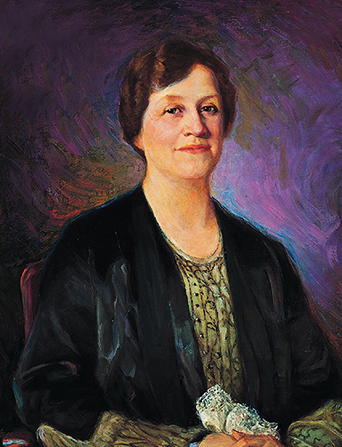
Louise Yates Robison is one of our lesser known Relief Society Presidents, but you will learn to love and value her after reading this short life sketch.
First, we need to start with the story of her remarkable mother; Elizabeth Francis Yates. Elizabeth was born and raised in England. She even married there and had four beautiful daughters. When she learned of the church, she readily accepted it but was abandoned by her husband as her activity grew. When her husband saw how happy she was with the church, he kidnapped all of her daughters.
“After years of fasting and prayers, and many tears, the Lord opened the way for me to come to Zion,” she wrote. She left the country with the Yates family, whose son she would later marry on the plains heading west. Later in life, she would be reunited with two of her lost daughters.
Elizabeth and Thomas Yates would be part of a group of people sent to establish Millard County. The town of Scipio was as far away as could be from big city life. In danger of Indian attacks, the family would hide in the cellar for protection. Sarah Louisa Yates (always known as Louise) would be born days after her mother fell down the stairs during one such attack.
Louise, as a young girl, was large and awkward for her age. Her older sister Lizzie admitted to crying herself to sleep over Louise’s homeliness. While walking home together one day, and enjoying a rare treat of sugar cane stalks, the girls came across a cow in the field. The cow took Lizzie’s stalk and the girls ran screaming home. When asked how she was able to save her’s, Louise replied, “I fell on it.” Years after, her parents would laugh at the recollection, to Louise’s bemusement.
When Louise was sixteen, everyone was getting ready for the first stake conference to be held in town. The building was shining inside and out except for an ugly stain on the ceiling. Hoping no one would notice, Louise was “hopping mad” when the cute boy with dashing sideburns looked up and said something about it. This young man was Joseph Lyman Robison. From this unimpressive first impression, came a happy marriage, including six children.
Serving mostly in the MIA, Louise was beloved by her girls. When she was first called as YWMIA President, the bishop disregarded her selection of two friends as counselors, and called women she did not know. She found these women to be ideal counselors and dear friends. This was a great lesson in trusting the inspiration of her Bishop. But, at a Stake Dance, when the Waltz was strictly prohibited because of its close contact with the partner, Louise cornered the Bishop, keeping him occupied long enough so the youth could dance, just once, the forbidden dance.
While Louise was serving as a counselor in her stake Relief Society Presidency, she attended a General Relief Society Meeting where Emmeline Wells was released as the General Relief Society President. She heard Clarissa Smith Williams announced as the new President with her two counselors, Louise Y. Robison and Jennie Knight. She even raised her hand to sustain this woman with the same name as her own, not realizing that she was the very one being called into the General Relief Society Presidency. Later, she would be called as President with Amy Brown Lyman and Julia A. Child serving as her counselors.
Not only was Louise a fabulous pie maker, seamstress, and gardener, she also had the reputation of being loving, gentle, and sympathetic. Her son stated that she was “one of the most widely beloved women in the Church”. Back when women wore hats, it was encouraged that large hats be removed during meetings. Women tended to be a little stubborn about that suggestion, so to further encourage the women, Louise announced, during one meeting, that everyone should remain seated as they sang. “I’m sure you have books and papers and your hats on your laps, and I’m afraid it would be hard for you to hold all of them if you stand.” This very subtle reprimand got the message across.
Some of her greatest accomplishments as President of the Relief Society organization were:
- The establishment of Mormon Handicraft. Serving during the Great Depression, Louise was sensitive to women being able to stay home to raise their children, while helping the family earn a little extra money.
- During her presidency, it was officially announced that the colors of the Relief Society should be blue and gold.
- The first Relief Society monument was dedicated at the site of the Joseph Smith store in Nauvoo, Illinois.
- Louise was the first Relief Society President to travel to England and Europe, as well as visiting with sisters in Hawaii, Canada, and the East Coast.
- The Relief Society’s association with the National Council of Women continued with her being invited to the White House, as well as speaking at the International convention.
- It was Louise’s idea to organize the Singing Mothers Chorus, taking their name from a favorite quote of her’s, “ A singing mother makes a happy home”. A dark skirt and white blouse uniform were simple enough that every sister could participate.
Information is taken from:
Elect Ladies, Janet Peterson and LaRene Gaunt
“Elizabeth Francis Yates: Trial by Heartbreak”, Ensign, July 1979
Robison Family Scrapbook, Church History Library